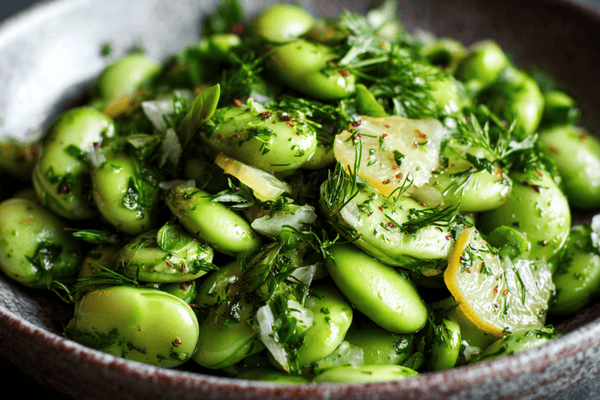 We love to keep our kitchen utensils in tip-top condition and that’s especially true of our collection of Japanese knives. Aside from proper maintenance, there are other things you need to be mindful of if you want your sharp blades to last as long as possible.
We love to keep our kitchen utensils in tip-top condition and that’s especially true of our collection of Japanese knives. Aside from proper maintenance, there are other things you need to be mindful of if you want your sharp blades to last as long as possible.With Japanese blades being made from hard carbon steel, they are a lot more brittle and delicate than their European counterparts. If there’s one type of damage that these knives are known for, it’s chipping.
That shouldn’t be something that puts you off using a Japanese knife, however. They’re still some of the best blades out there and how you use them will determine whether they become damaged.
But what most people want to know is whether time really is a killer and whether chips to the blade are just something that’s bound to happen and will result in a dull knife.
Table of content
Why Do Japanese Knives Chip?
As we have mentioned, Japanese kitchen knives are made from carbon steel and this metal is much harder than the stainless steel that Western knives are made from. Typically the steel used to manufacture a Japanese blade will be at least 60 on the Rockwell Hardness Scale.Of course, there is a reason that such hard steel is used and that’s mainly because of the impressively long edge retention. What’s more, the knife will be much more lightweight and a lot easier to sharpen. If that wasn’t enough, you can get the most precise and razor-sharp cutting edge for a knife that’s ridiculously effective.
But this comes at the cost of durability. It’s not that these knives aren’t tough in their own way, it’s just that they’re much more delicate. Because the edge of the steel is so thin, this makes it more prone to damage. And the harder the steel that is used, the more delicate the blade is. So, if it is mishandled, knocked or dropped, there’s a chance it will break.
Is It Inevitable That My Blade Will Chip Over Time?
While Japanese carbon steel blades are indeed sensitive, these are tools that are designed to withstand the test of time. In most cases, the blade will chip because of something that the user has done either purposefully or, more likely, accidentally.The most common reason that a knife will succumb to damage is when it isn’t used properly. Things like cutting bones, frozen food, crusty bread, cheese and other hard foods can easily cause the blade to chip. If you only cut foods that you’re supposed to cut with your Japanese knife, there’s no reason that time will cause it to chip.

You also need to be very mindful of your cutting surface area. If you use your knife to cut on a stone, glass or ceramic cutting board then this is going to damage the blade. Over time, chips could become worse, leading to irreparable damage and eventually rendering the blade useless. But if you stick to things like wood, there’s far less chance of chipping just happening.
Trauma to the knife can also come in the form of being dropped on the floor or bashed. This isn’t something that any chef is going to do on purpose but accidents happen. In severe cases, it could be that the tip of the knife breaks off entirely.
It’s also worth mentioning that chips are much more likely on blades that have been sharpened at too small an angle. Typically speaking, Japanese knives should be sharpened to around 12 degrees. Any less than this and the edge may be too thin and unable to withstand the pressure of use.
Finally, and this is rare, but chipping could be a result of a manufacturing fault. If the heat treatment process wasn’t good then there’s a risk that chips could start forming over time. You might even notice that, when sharpening the blade, the material just crumbles away.
Can Chips Be Fixed?
The good thing about Japanese kitchen knives is that they’re designed to last a long time which means that a lot of damage can be repaired at home.
If your knife has developed small chips then you may be able to sharpen these out with a whetstone. However, if the chips are bigger than around 2 mm, it might be best to take the knife to a professional who will be able to perform a more accurate repair.
If you attempt the process yourself, there is a risk that you’ll take off too much material or affect the functionality of the blade. What’s more, repairing severe chips or a broken tip can take a lot of time.
Taking the Best Care of Your Blade to Avoid Chips
As long as you take good care of your Japanese kitchen knife, there is no reason that the sharp blade should just chip. As we mentioned earlier, most damage will be a result of user fault so as much as people don’t want to hear it, it all comes down to how you treat your equipment. Here are some tips for taking the best care of your blade to avoid chips.Use the Knife Properly!
Japanese knives are designed for cutting food with light pressure. That is all they’re intended for. You can’t take one of these blades and use it to pull apart a chicken on your Sunday roast. You can’t use them for frozen foods or chopping through bones and you certainly shouldn’t use them for other tasks like opening parcels or tins and expect them to stay sharp!What’s more, you can’t just use any old accessories with your Japanese knife and this applies particularly to the type of chopping board you have. If you want to avoid chips and get the most out of your blade then you must ensure that you’re using a wooden cutting board. If the material of the board is harder or thicker than that of the blade, this spells disaster. Even if you don’t chip the knife, you’ll end up dulling it much more quickly.
When you are using your Japanese blade, be careful with it. Don’t slam it down on the countertop or bash it against other items. What’s more, you need to be really careful with how you store the blade as even just the act of hitting other items in a drawer could have devastating results.
Finally, when you’re finished using your Japanese blade, make sure that you clean it properly. Never put it in the dishwasher and only use water and a gentle detergent, making sure you thoroughly dry the knife straight away, before storing it.
Cut Using the Right Techniques
There are lots of techniques that Japanese chefs use in order to get the most out of their knives and to protect them.We’ve mentioned the importance of not using your knife for hard foods as this can cause chips but there’s a reason for this. Let’s imagine you have a butternut squash that you want to cut in half.
 This is a very tough vegetable and you’ll need a good amount of force and power to cut through it. But the trouble is that, when you put your knife in and then use your hand to force it through the food, this isn’t cutting as much as it is splitting.
This is a very tough vegetable and you’ll need a good amount of force and power to cut through it. But the trouble is that, when you put your knife in and then use your hand to force it through the food, this isn’t cutting as much as it is splitting.
Japanese knives are not designed to be used this way!
The force will shock the knife and this is one of the main reasons that people end up with chips to their new edge. What’s worse is that a lot of people won’t even notice the chip right away and will continue using the knife, making matters worse.
Another thing that you should really avoid when cutting with a Japanese blade is twisting or shearing. Any sort of lateral force making the blade bend can cause damage to the delicate metal which is really only designed for up-and-down cutting motions.
We’d also strongly recommend against scraping the blade over the chopping board to move food around. That’s not what it’s designed for and it’s a surefire way to dull the blade or chip it.
Storage
We personally think that the best way to store your blades is in a leather sheath or a knife roll or bag. These are designed to protect the blades and are often preferred by professional chefs.You can also use magnetic knife racks which gently support your blades and are generally a lot safer for your knives.

Final Thoughts
We’ve heard some horror stories about Japanese blades chipping to the point that they have to be thrown away. But is this something that inevitably happens with time or can we stop it?The truth is that chips to the blade are usually because of how the knife has been used or improper care. Japanese knives are delicate but they’re made to last a long time. However, if you bash them, use them incorrectly or otherwise don’t take care of them then they can chip.


